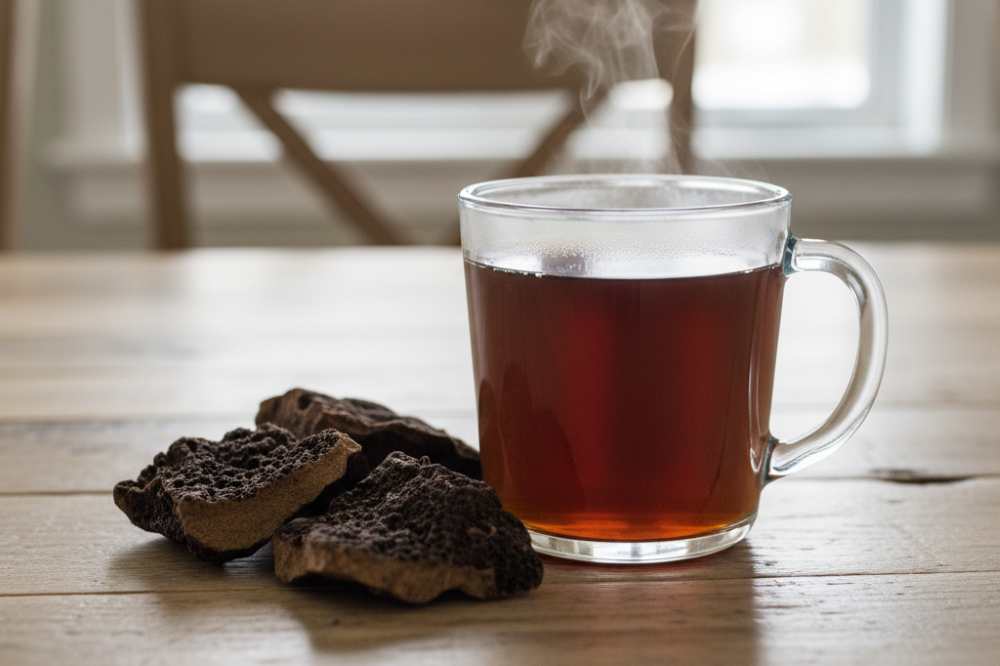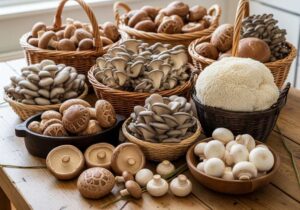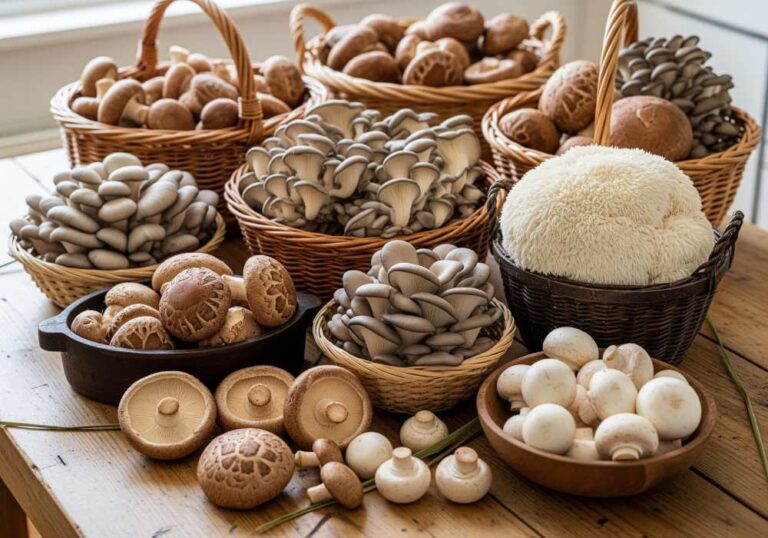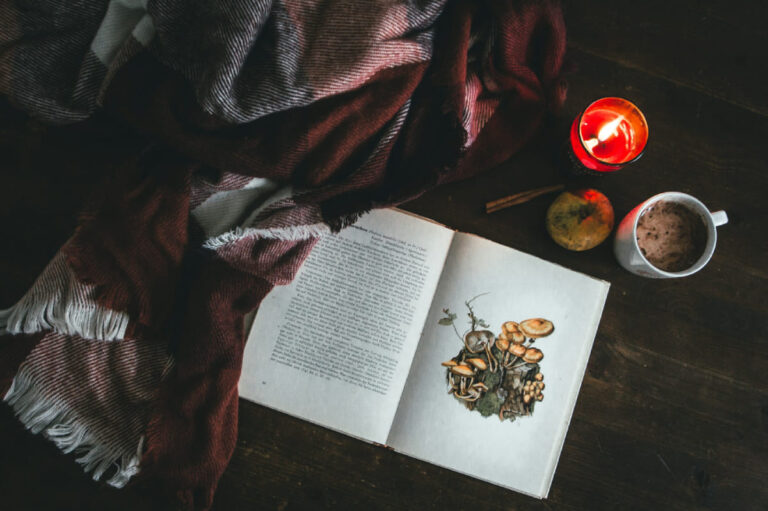Mushroom tea is one of those drinks that sounds odd until you try it. At its core, it’s simply hot water used to draw out the natural compounds locked inside fungi. Unlike regular black or green tea, mushroom tea isn’t about caffeine; it’s about beta-glucans, antioxidants, and other bioactive compounds that support different body functions.
Some mushrooms are woody, like chaga or reishi, and need a simmering process, while others, like lion’s mane, release their beneficial compounds with a simple steep.
So, is it worth drinking? The short answer is yes. Mushroom tea can be a useful superfood drink when you want something calming, functional, and tied to traditional wellness practices. But you need to understand which mushroom, which method, and what you want.
Ins And Outs of Mushroom Tea
When people say mushroom tea, it’s usually about an infusion or decoction. It’s a fancy way of describing how to extract compounds from mushrooms with hot water.
- Infusion: like brewing chamomile, good for softer or delicate mushrooms.
- Decoction: simmering tougher mushrooms, like reishi or chaga, that don’t give up their properties easily.
In traditional medicine, mushrooms like shiitake, reishi, lion’s mane, and chaga have been used for centuries. They’re called functional mushrooms because they go beyond food and are valued for potential wellness effects. The useful parts of these fungi are often beta-glucans (a type of polysaccharide known to influence the immune system), phenolic compounds (linked to antioxidant activity), and sometimes triterpenes (important for reishi but harder to extract without alcohol).
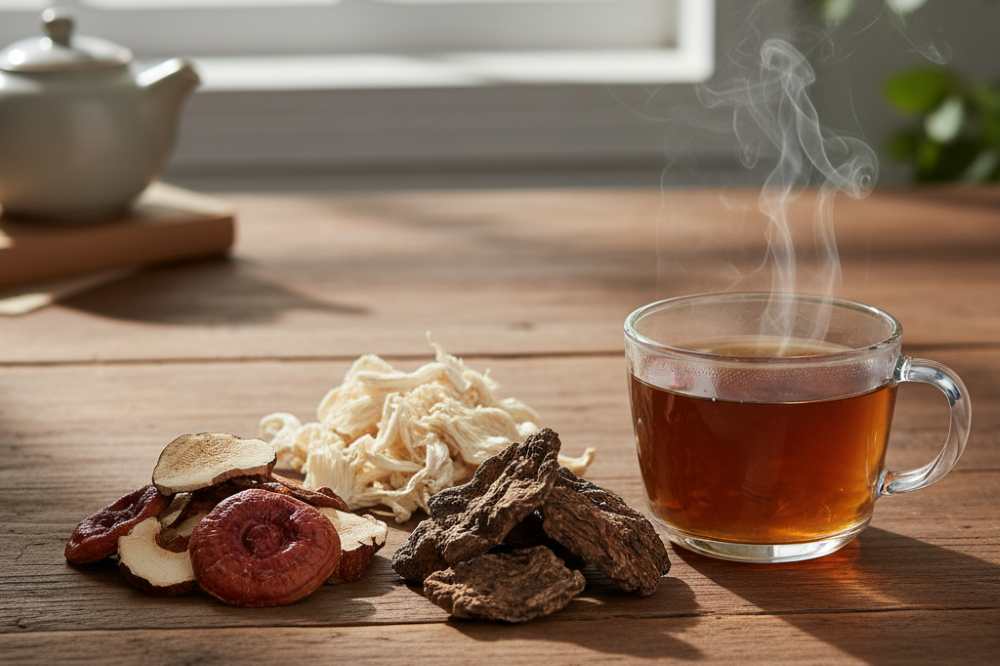
Mushroom tea stands out because it bridges two worlds: the culinary (flavor, warmth, ritual of sipping) and the medicinal (extracting compounds with physiological activity). Unlike mushroom coffee, which blends powder with caffeine, tea is about slow release and absorption.
How Mushroom Tea Delivers Benefits
When you brew mushrooms in hot water, you’re not just making flavored water — you’re pulling out real molecules that can interact with your body. Here’s what typically ends up in your cup:
- Polysaccharides (especially beta-glucans) support immune system activity by helping immune cells recognize and respond more effectively.
- Phenolic compounds are antioxidants. They help neutralize free radicals, which means they may reduce oxidative stress inside the body.
- Some mushrooms release Exopolysaccharides (EPS) into water; they’ve been studied for antioxidant and even anticancer properties in lab settings.
- Triterpenes in reishi are linked to adaptogenic effects, but they don’t dissolve easily in water. That’s why some people use dual extraction (water + alcohol) to get a fuller profile.
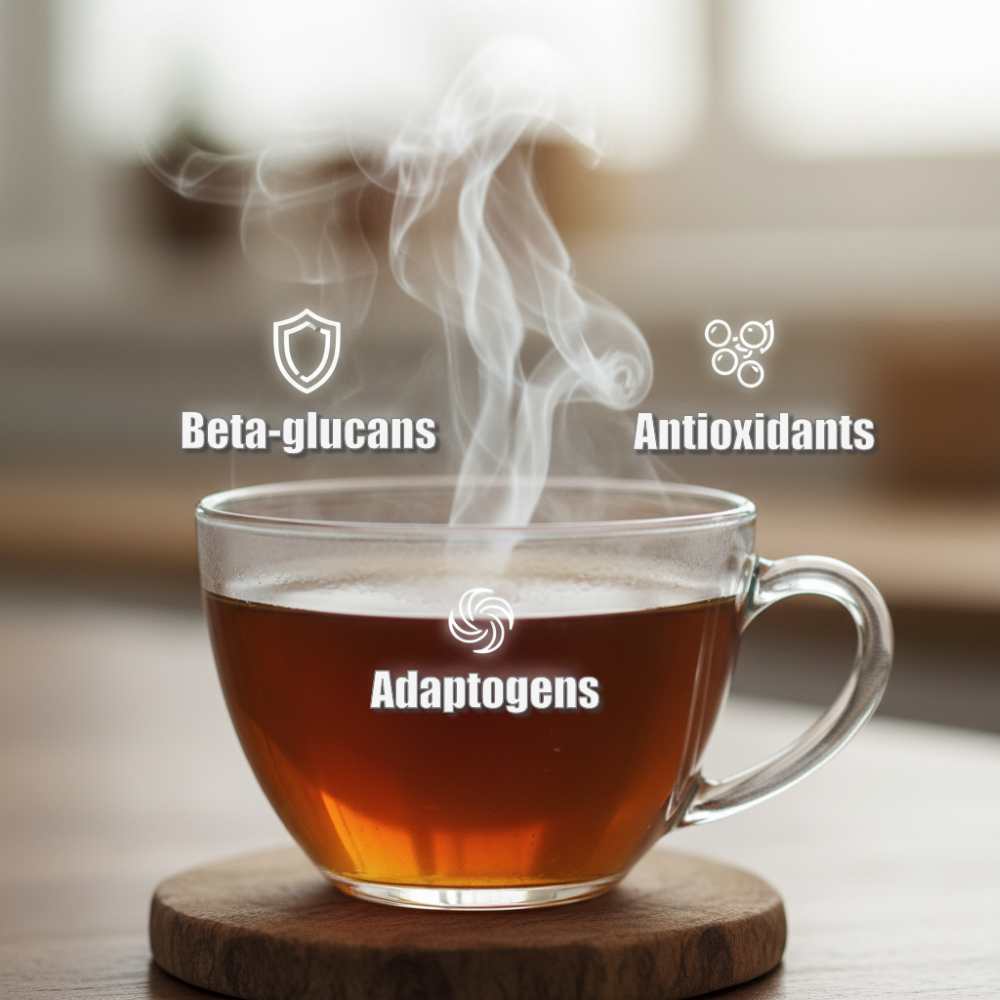
The brewing method changes what you get. A study on lion’s mane found that a simple hot-water infusion retained more phenolics and showed stronger antioxidant activity than a longer boiling process. This means your preparation style isn’t just a preference. It affects the health-related compounds in your cup.
Mushroom tea works because water is a powerful solvent for many of the compounds that make mushrooms functional. I’ve noticed in my own brewing experiments that lighter teas (like lion’s mane infusion) taste milder but feel more uplifting, while longer decoctions (like chaga or reishi) brew darker, bitter, and grounding cups. The science backs that up: different extraction methods = different chemistry in your mug.
Types Of Mushroom Teas
Every mushroom has its own character, both in flavor and function. Think of this section as a tasting map for the most well-known varieties.
- Lion’s Mane Tea: Known for its links to brain health and nerve growth factors, this mushroom brews into a light, earthy tea. A hot-water infusion keeps its phenolic compounds intact, giving you antioxidant support and a mild, uplifting flavor.
- Reishi Tea: Bitter, woody, and grounding. Reishi is often called the “mushroom of immortality” in traditional use. It contains triterpenes that are better extracted with alcohol, but a long simmer (decoction) still pulls out beta-glucans that can support the immune system and promote relaxation.
- Chaga Tea: Brewed as a deep brown decoction, chaga has an almost coffee-like body with hints of vanilla. It’s valued for its melanin and polysaccharides, often tied to antioxidant activity. It’s a favorite for people who want a caffeine-free, robust alternative to coffee.
- Sanghuang (Inonotus hispidus) Tea: Less known in the West, but widely respected in Asian traditions. Sanghuang’s exopolysaccharides show strong antioxidant and even anticancer activity in lab research. The tea itself is bold and somewhat bitter, similar to reishi but with a unique earthy depth.
- Shiitake Tea: This is a more approachable option with a savory, umami flavor. Shiitake contains lentinan, a polysaccharide with immune-modulating properties. It’s a good entry point for people curious about medicinal teas but not ready for reishi’s bitterness.
- Cordyceps Tea: Traditionally linked to energy and stamina. The tea is mild but slightly sweet. Modern cordyceps products are usually mycelium-based powders, which work better as an infusion than a decoction.
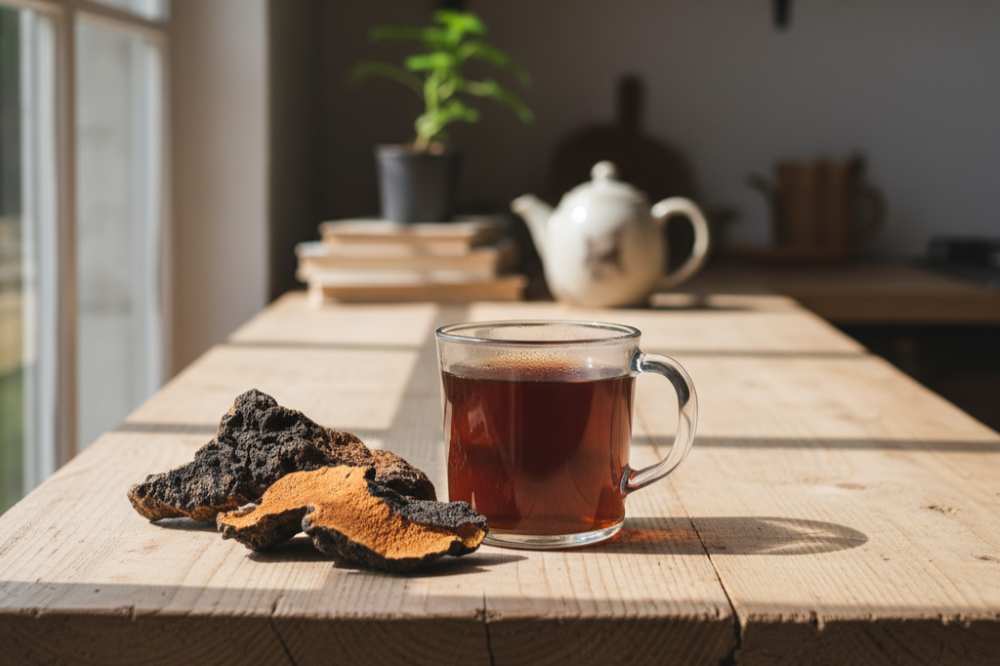
Each of these teas can stand alone, but many enthusiasts blend them to balance taste and function. I like pairing lion’s mane with reishi; the lightness of one balances the heaviness of the other.
Are Mushroom Teas Good for You?
This is the big question. Just Like Mushroom coffees; Mushroom teas have combine tradition, wellness, and functional nutrition. But what does the evidence really say?
Here’s the straight answer: mushroom teas can support health, but the strength of that support depends on the mushroom species, preparation method, and consistency of use.
- Immune system support: Beta-glucans, found in many functional mushrooms, can modulate immune activity. They don’t act like medicine that forces a result, but they can prime immune cells to be more responsive.
- Stress and sleep: Reishi tea is often called an adaptogen because its compounds are linked to calming effects on the central nervous system. Many people drink it at night for relaxation.
- Brain health: Lion’s mane is gaining attention because of research on compounds that may influence nerve growth factors. While mushroom tea doesn’t deliver concentrated extracts, the infusion still carries antioxidant molecules that support brain health.
- Blood pressure and cardiovascular health: Some mushroom teas, especially those from reishi and shiitake, may influence circulation and blood pressure regulation. If you’re already on medication for hypertension, you should be careful here.
- Digestive balance: Certain mushrooms provide prebiotic fibers that feed beneficial gut bacteria, though much of this effect comes from eating mushrooms directly rather than drinking them.
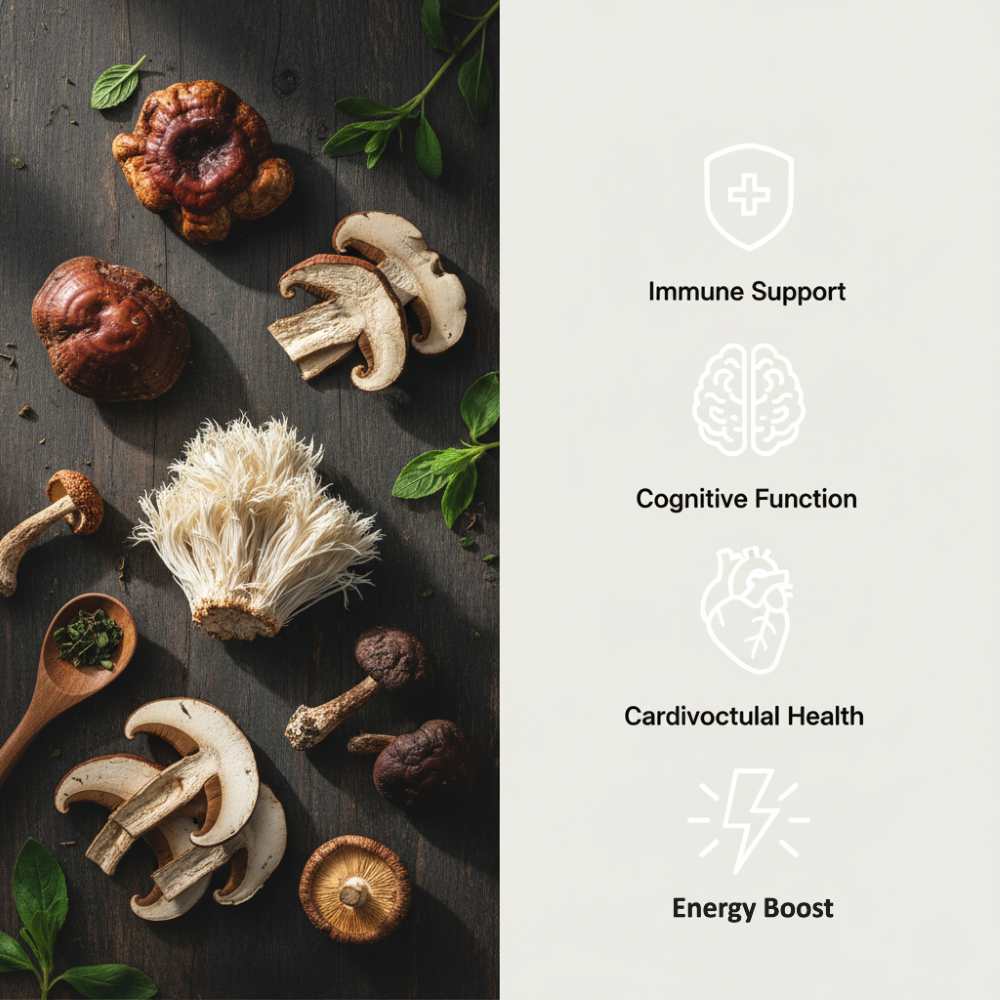
Here’s what’s important to note: lab research often shows promising results (like antioxidant or anticancer activity), but human studies are fewer and usually small. That doesn’t erase the benefits, but it means mushroom tea should be seen as a functional drink to complement lifestyle, not a substitute for treatment.
As someone who’s brewed countless cups, I’d say the real-world benefit comes down to two things: (1) it creates a daily ritual that’s calming, and (2) it gives your body a steady trickle of compounds like beta-glucans that build up value over time.
How to Make Mushroom Tea | Beginner to Pro Methods
If you’ve never brewed mushroom tea before, don’t worry. The process is simple, but the method depends on the mushroom. Think of it like cooking: a soft herb like mint doesn’t need the same treatment as a dense root like ginger.
Basic Infusion (beginner-friendly):
- Slice or powder the mushroom (lion’s mane, shiitake work best).
- Add 1–2 teaspoons per cup of hot water (around 90–95°C).
- Steep for 10–15 minutes, strain, and sip.
Decoction (for tough mushrooms):
- Use dense mushrooms like reishi or chaga.
- Break into chunks or grind coarsely.
- Simmer gently in water for 30–45 minutes.
- Strain and drink; you can reuse the same mushroom pieces several times.
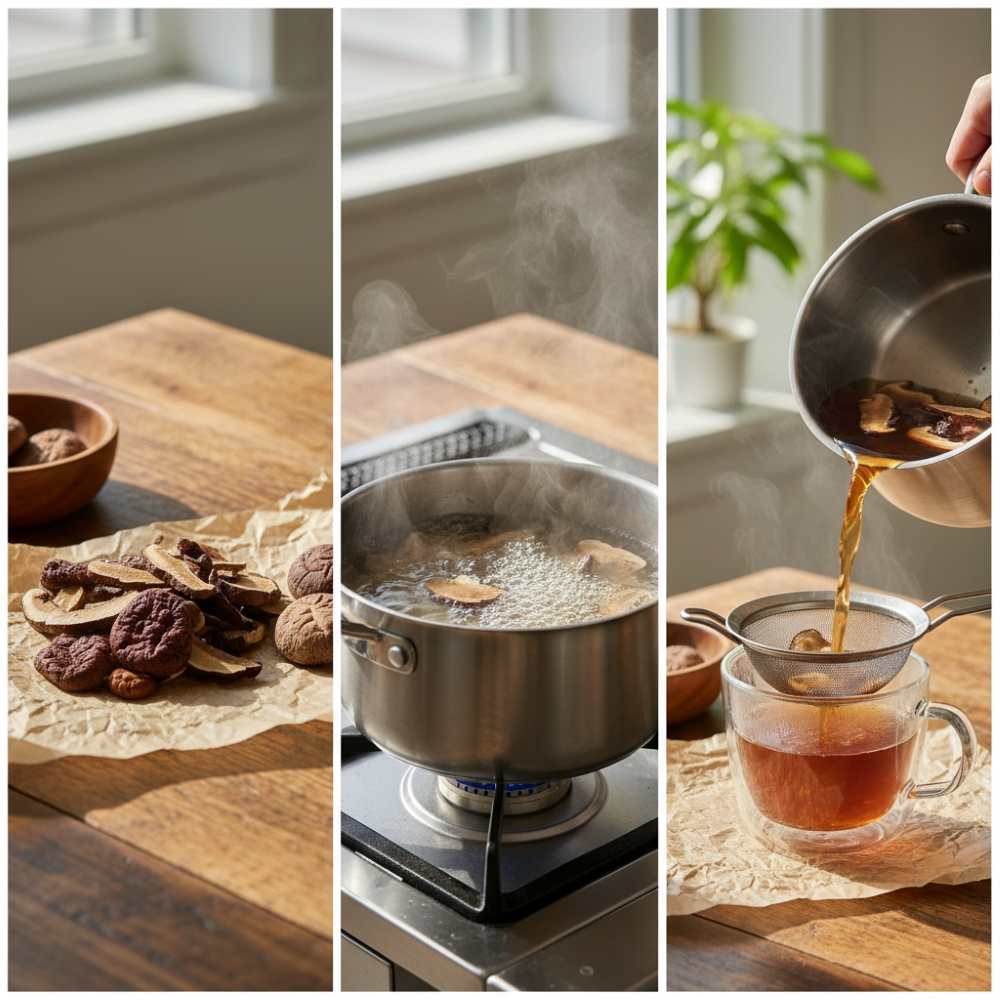
Dual-Extract (advanced method):
- Used when you want both water-soluble and alcohol-soluble compounds (reishi triterpenes, for example).
- Step 1: Make a decoction as above, strain.
- Step 2: Soak the same mushroom in alcohol (like vodka) for weeks.
- Step 3: Combine the two extracts. This creates a stronger, broader-spectrum mushroom preparation.
From my own kitchen, I often start beginners with lion’s mane infusion. It’s light, earthy, and doesn’t shock your taste buds. Reishi decoction, on the other hand, is bitter — a taste I grew to appreciate later.
Tip:
Grinding mushrooms before brewing increases their surface area, helping hot water pull out more compounds. Don’t grind them too fine if you’re not using a filter; otherwise, you’ll end up with mushroom sludge in your cup.
Brewing Techniques & Timing | Real Tips That Change Outcomes
The way you brew determines what you actually get from your mushroom tea. This isn’t just about taste — it’s chemistry in action.
- Infusion vs. decoction: Research on lion’s mane showed that infusion preserved more phenolic compounds and had higher antioxidant activity than long boiling. That means sometimes less heat and less time give you more benefit.
- Steep times: For soft mushrooms (lion’s mane, shiitake), 10–15 minutes is enough. For woody types (reishi, chaga), simmering for 30–45 minutes extracts the important beta-glucans.
- Water temperature: Too low, and the compounds will not be released. Too high for too long, and delicate antioxidants can degrade. Stick to a hot but not rolling boil for infusions and a gentle simmer for decoctions.
- Shelf life: Brewed mushroom tea should be kept in the fridge if you’re not drinking it immediately. It usually lasts 2–3 days before taste and quality decline.
- Batch brewing: I often make a small pot of chaga decoction, keep it chilled, and reheat a cup when needed. This saves time while still maintaining compounds intact.
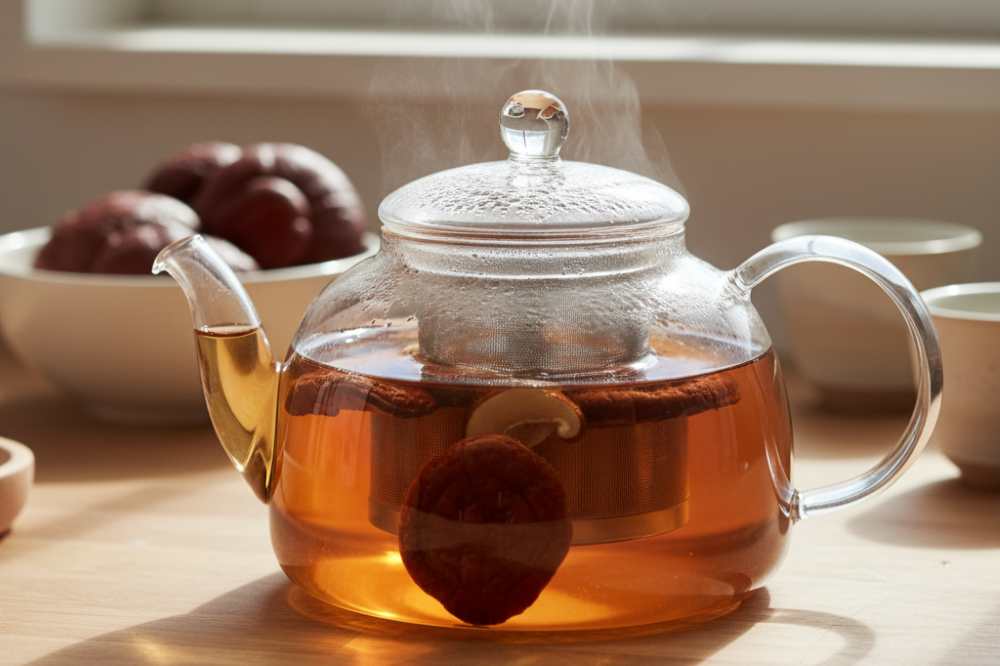
Flavor, Pairing & Culinary Uses
Let’s be honest: not every mushroom tea is naturally delicious. Some are bitter, some earthy, and some taste odd if you’re new to them. The good news is, with the right pairings, you can turn mushroom tea into something enjoyable while keeping its functional edge.
Ways to improve flavor:
- Add spice: Black pepper, ginger, or cinnamon work well with reishi and chaga, masking bitterness while adding warmth.
- Blend with real tea: Mixing mushroom tea with black or green tea adds familiarity and balance to the flavor.
- Citrus lift: A squeeze of lemon or a slice of orange brightens the taste and adds vitamin C, which pairs well with immune-focused teas.
- Sweeten lightly: Honey or maple syrup softens bitterness without overpowering the natural mushroom flavor.
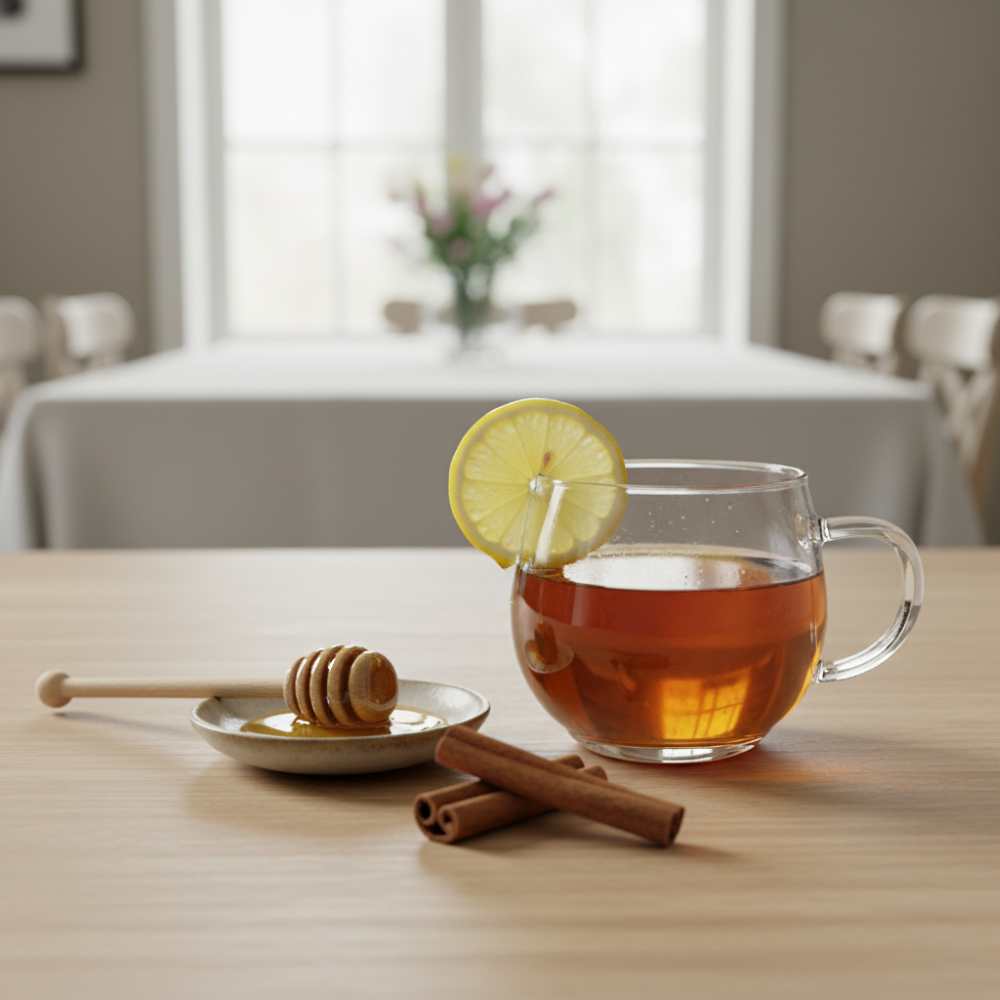
Creative uses beyond sipping:
- Use cooled mushroom tea as a broth base for soups or ramen. Reishi or shiitake tea can deepen savory dishes.
- Chill and serve mushroom tea as an iced beverage with herbs like mint.
- Blend into smoothies (lion’s mane works best here since its flavor is mild).
Storage, Shelf-Life & Batch Prep
Mushroom tea is best when fresh, but with the right storage habits, you can keep it practical and safe.
- Drink immediately when possible: Freshly brewed tea gives you the richest aroma and preserves delicate antioxidants.
- Short-term refrigeration: If you brew a larger batch, store it in a sealed glass container in the fridge. It usually lasts 2–3 days. Beyond that, the flavor fades and spoilage risk increases.
- Freezing for long-term use: Freeze tea in ice cube trays. Drop a cube into hot water when you want a quick serving — this keeps both taste and function fairly intact.
- Reheating: Warm gently on the stove. Microwaving can cause uneven heating and degrade flavor.
- Avoid pre-mixing sweeteners: Add honey, lemon, or herbs after reheating. Storing tea with these extras can cause fermentation or off-flavors.
From my own routine, I keep a small batch of reishi decoction refrigerated and freeze extras. That way, I always have a grounding cup available, whether I’m winding down in the evening or adding a cube into soup for a deeper umami note.

